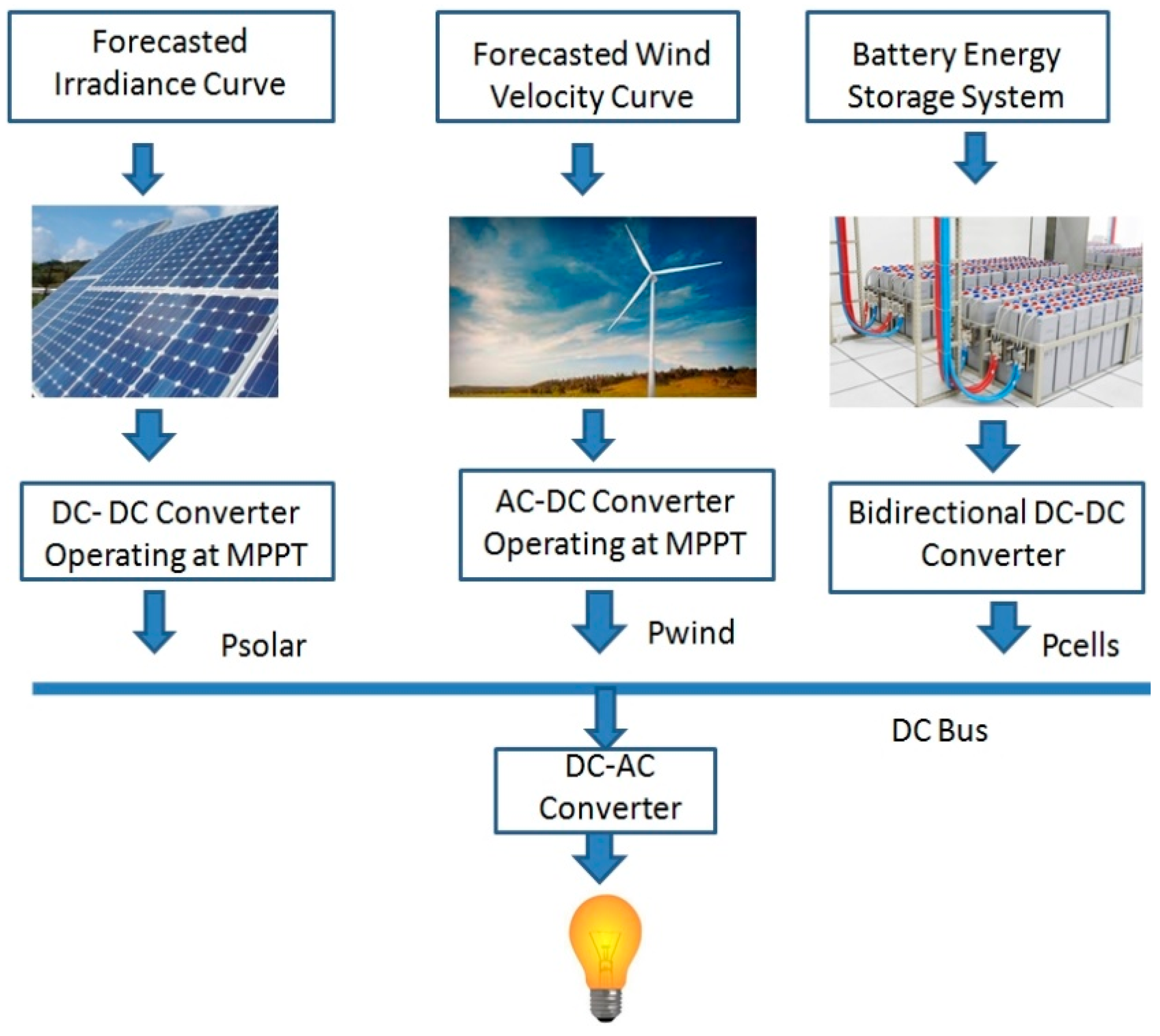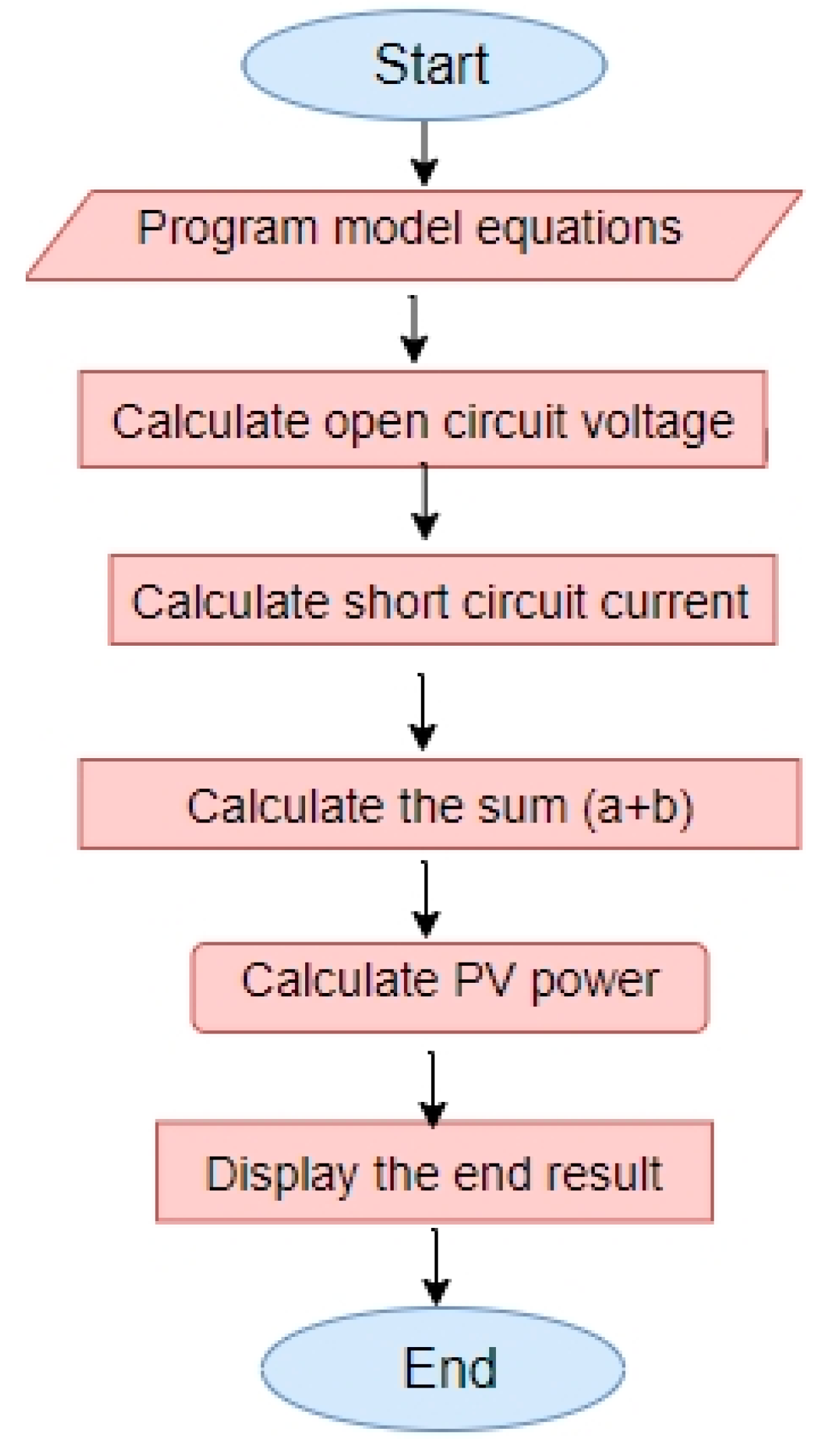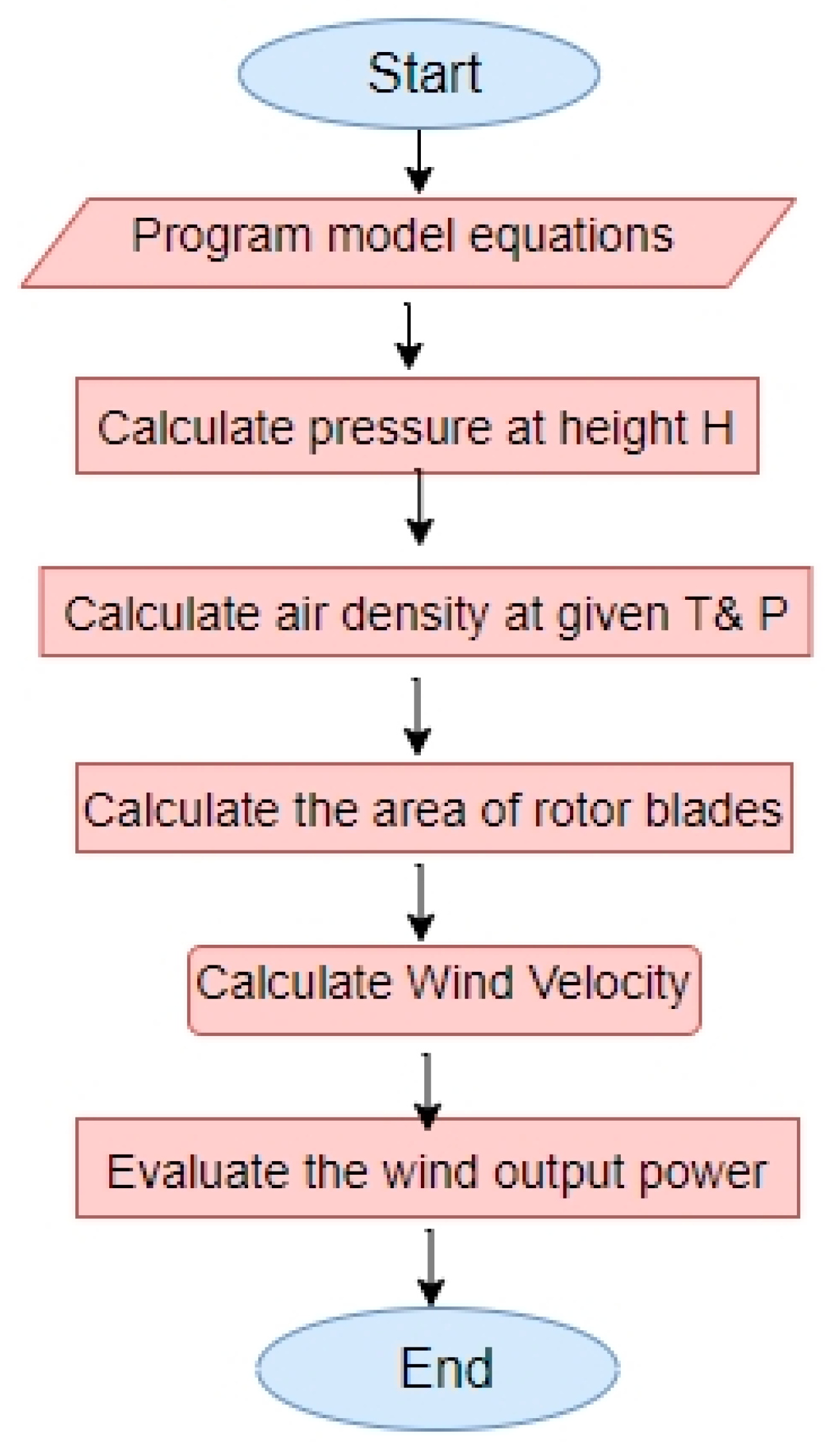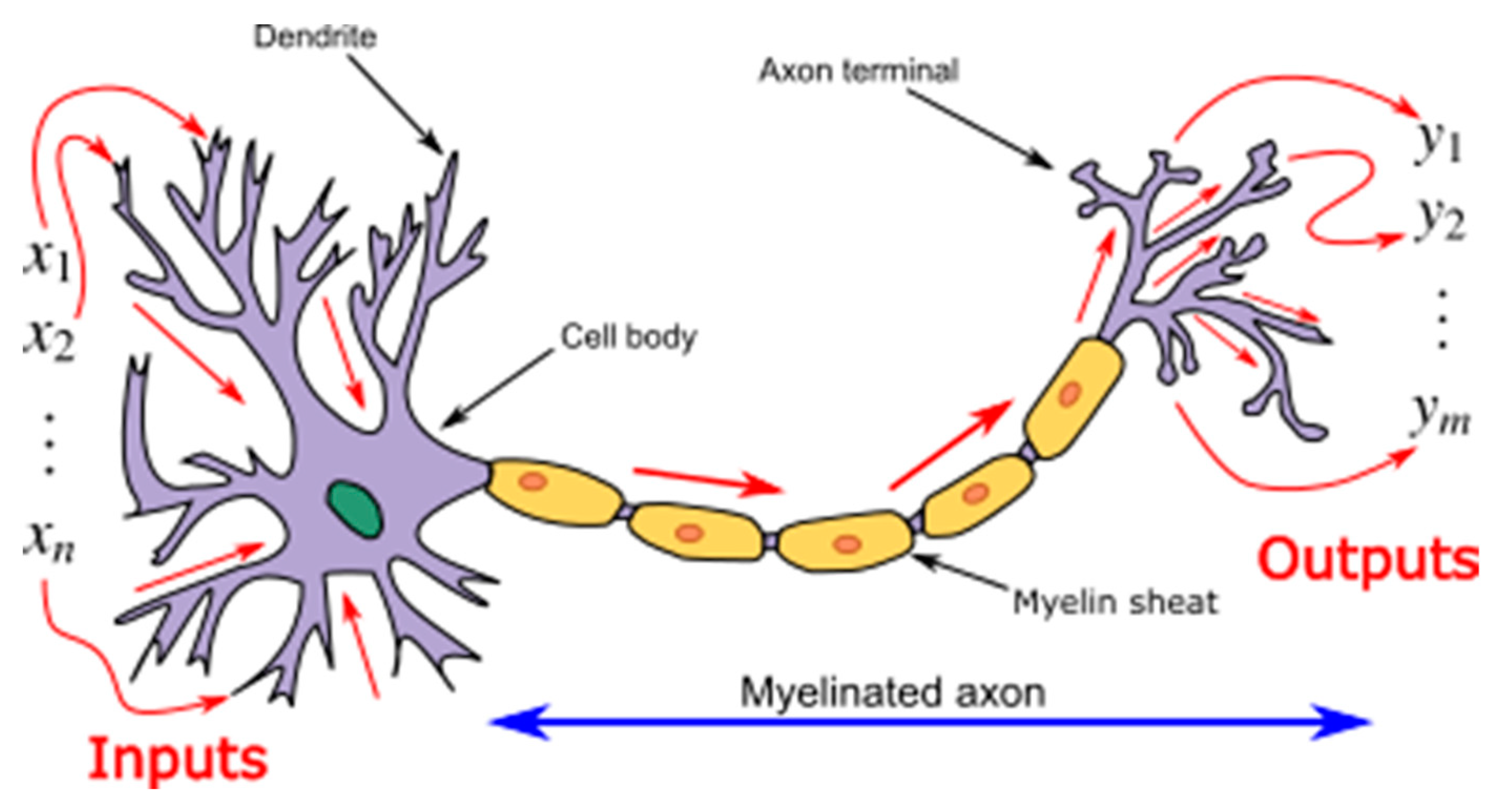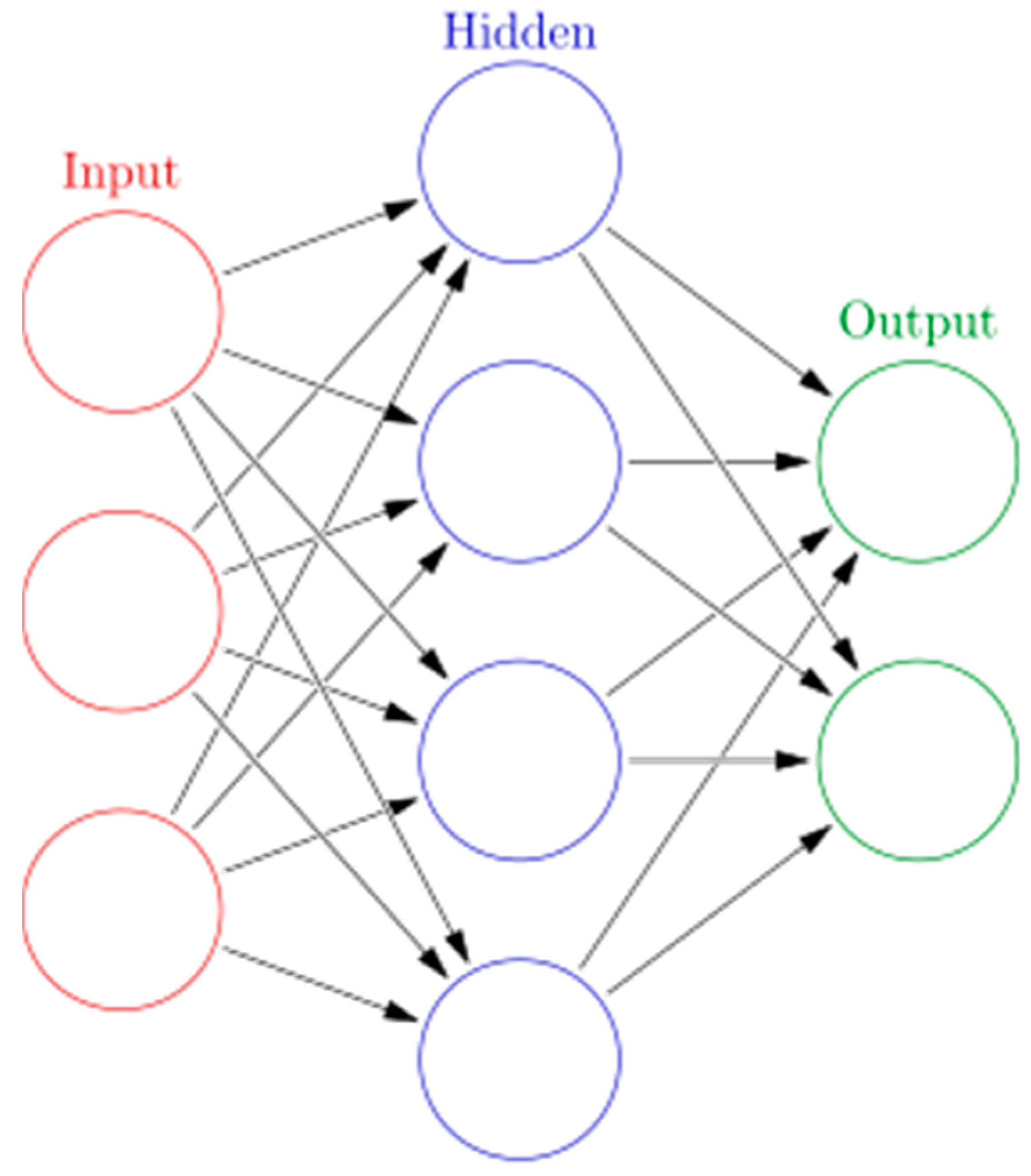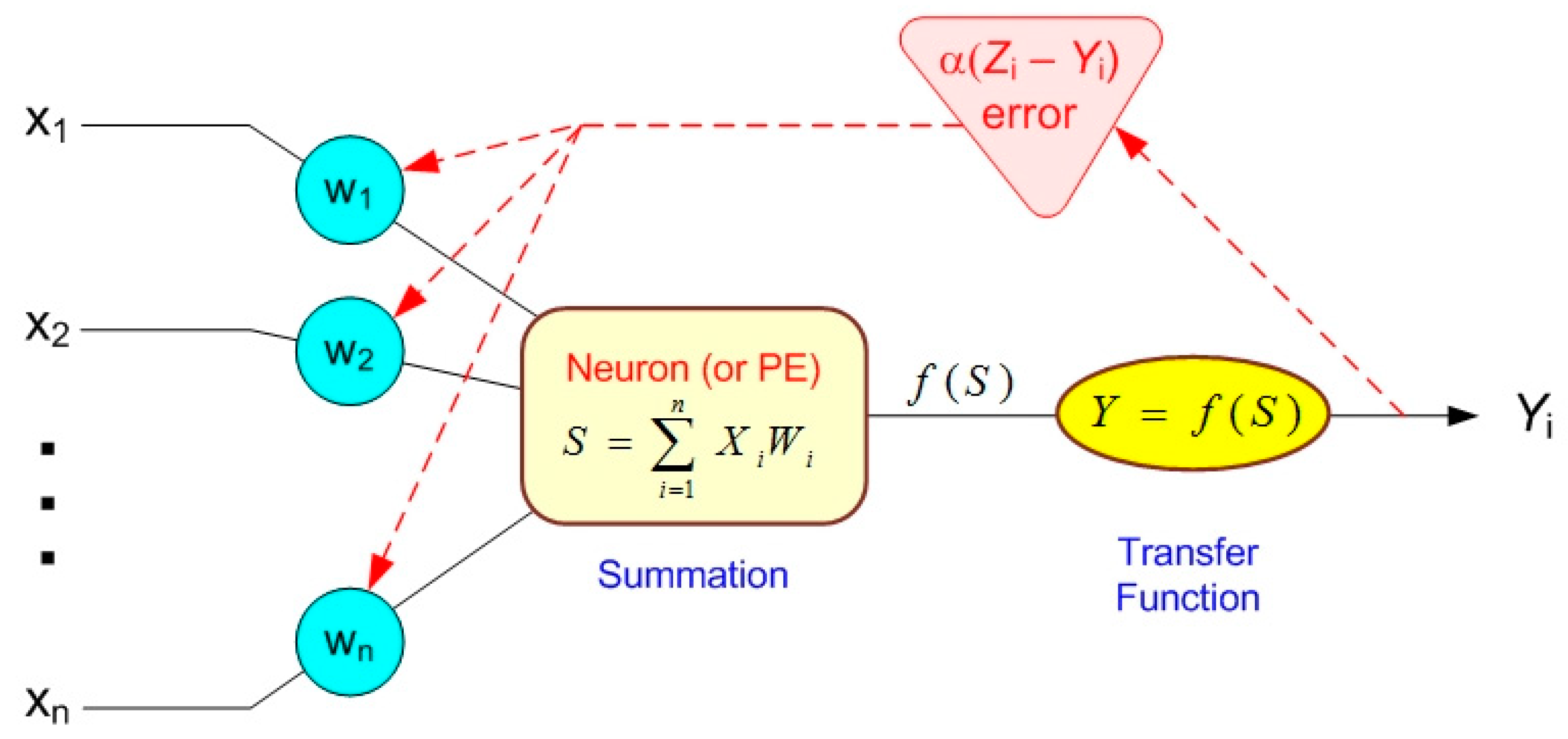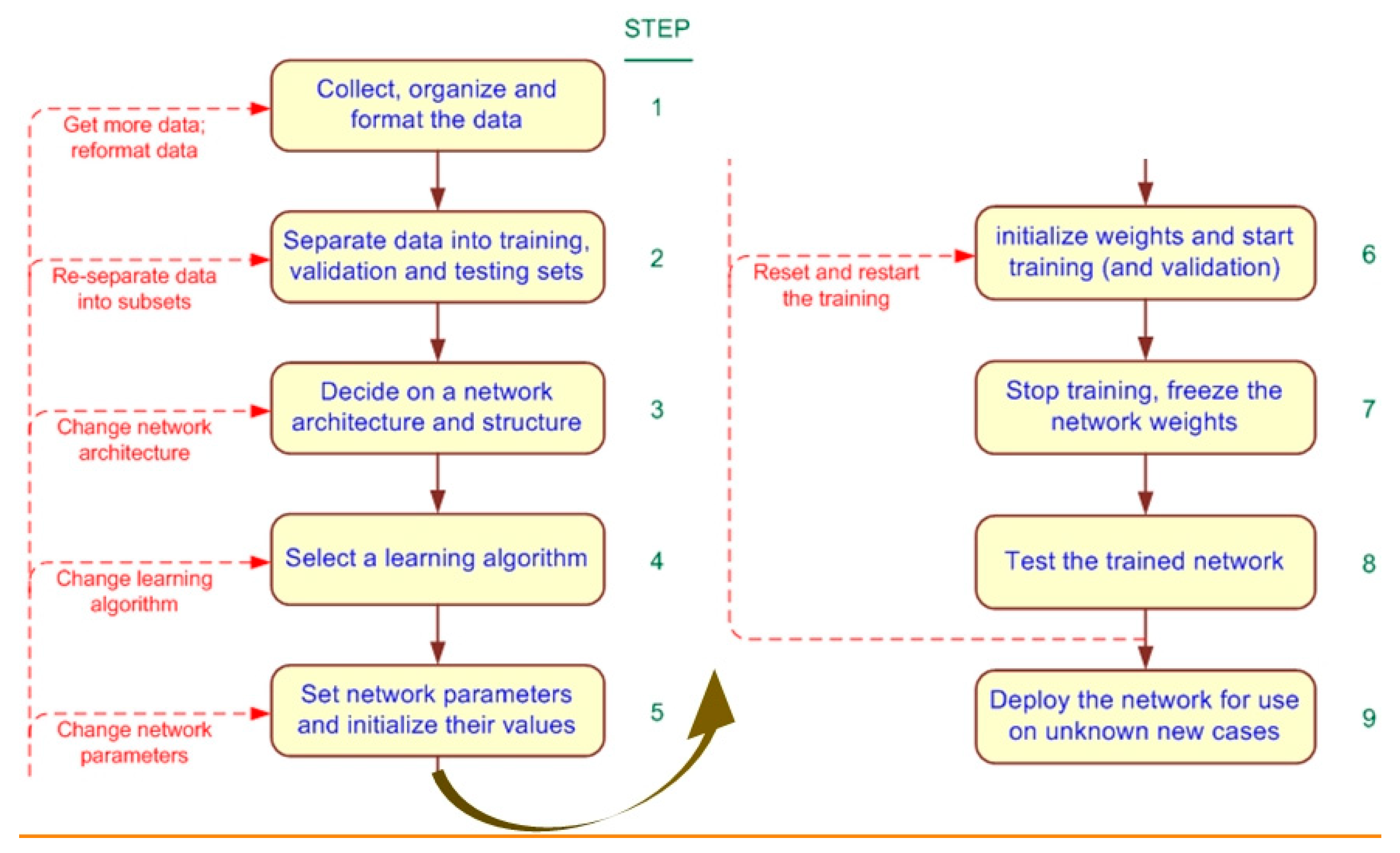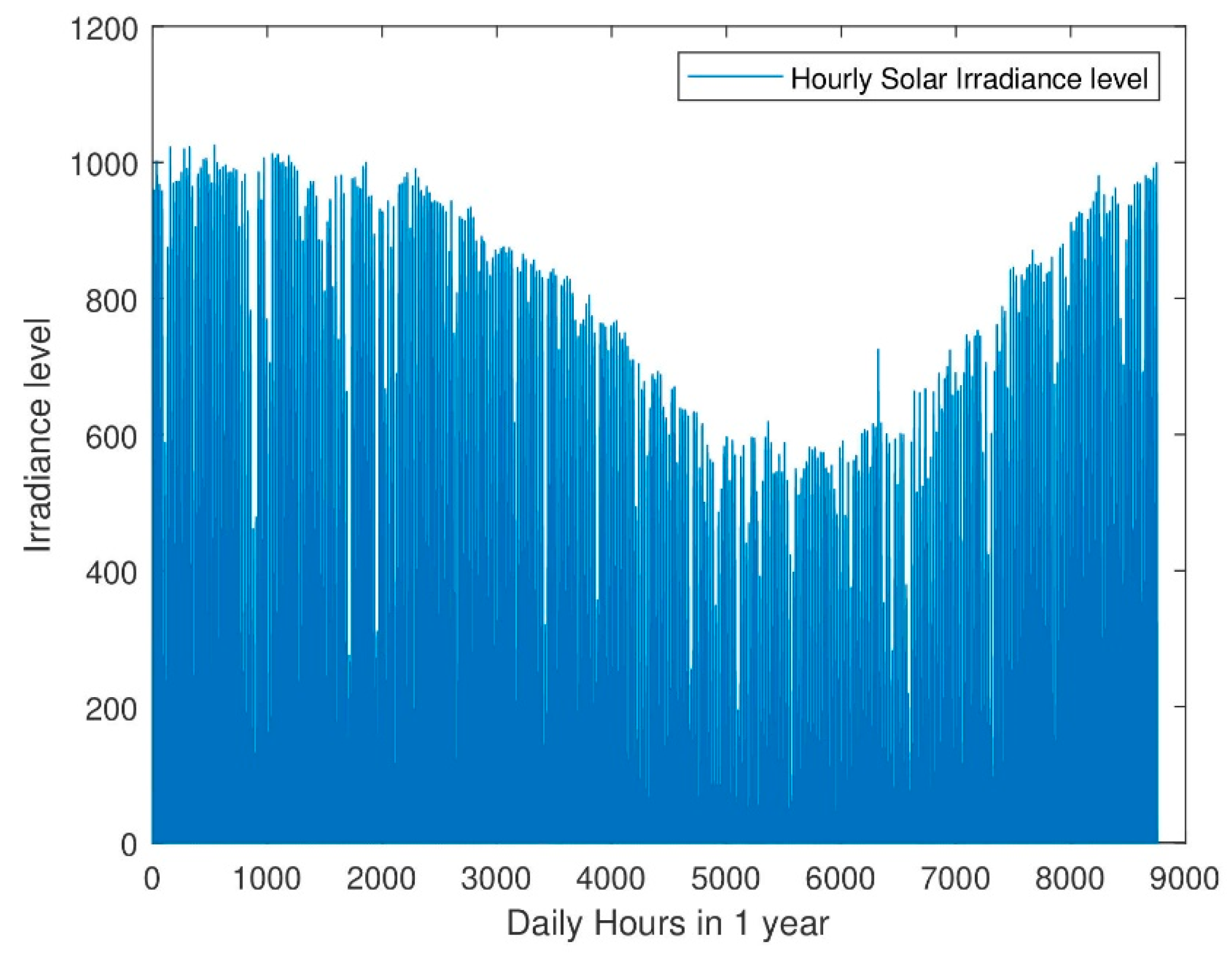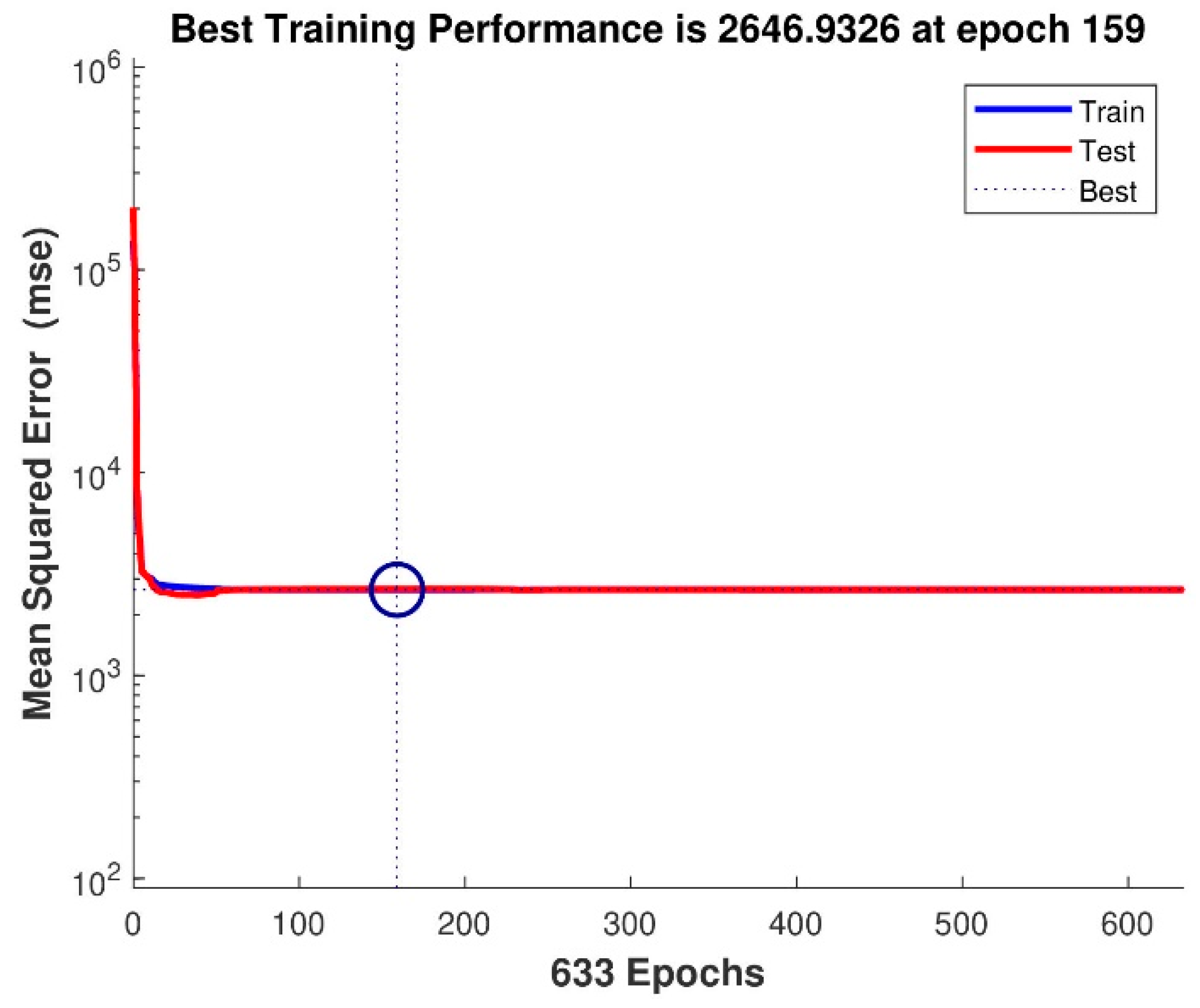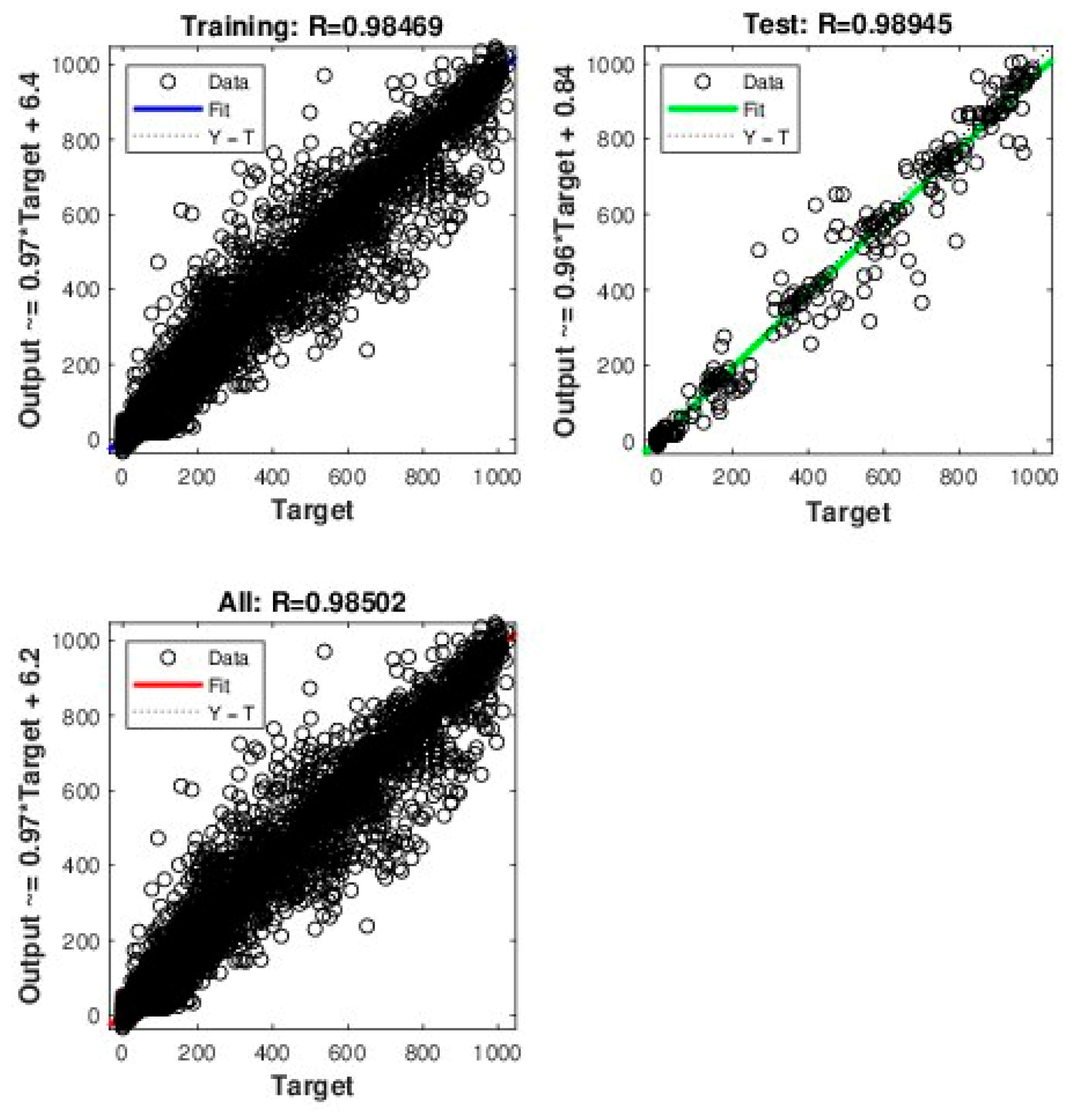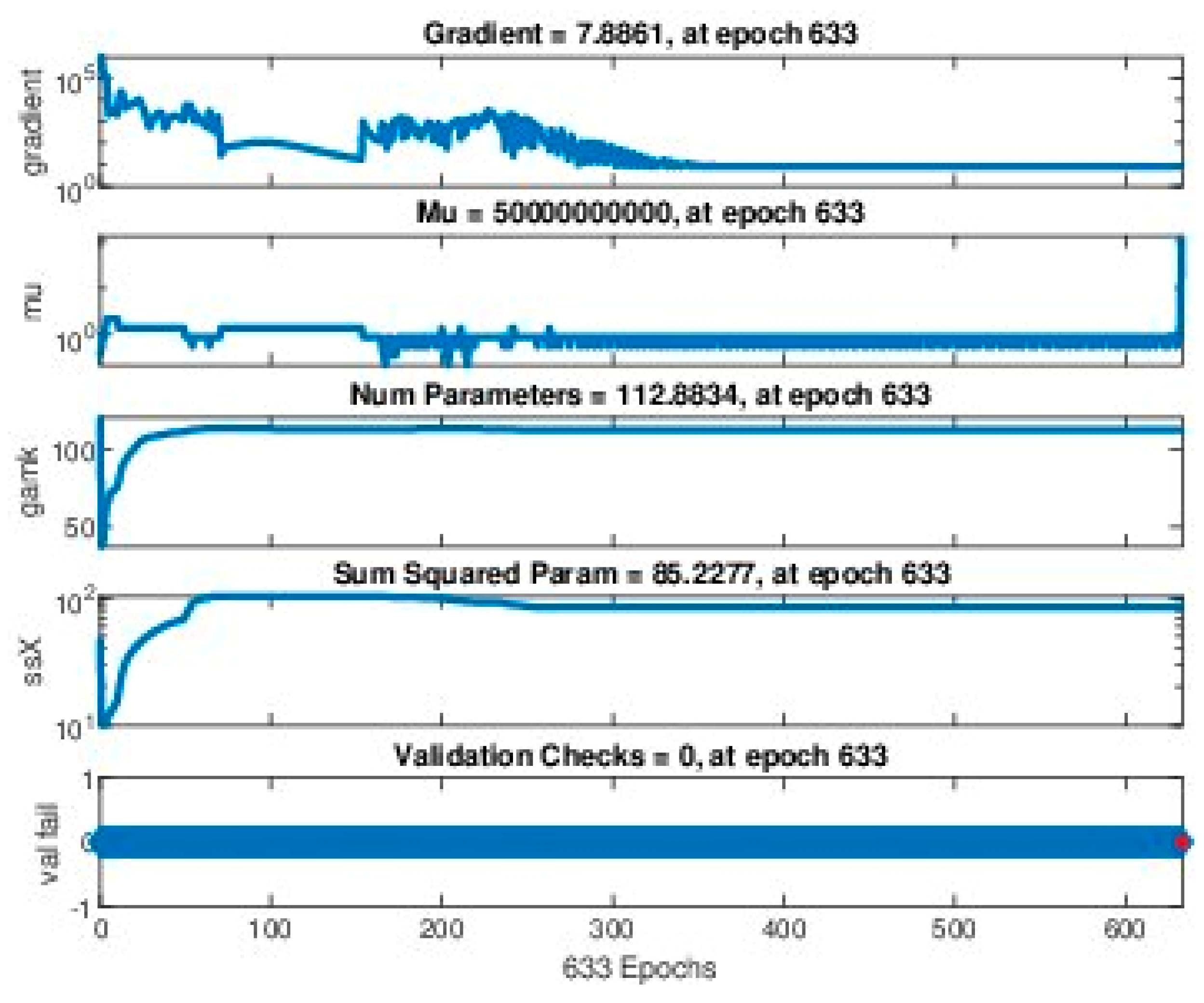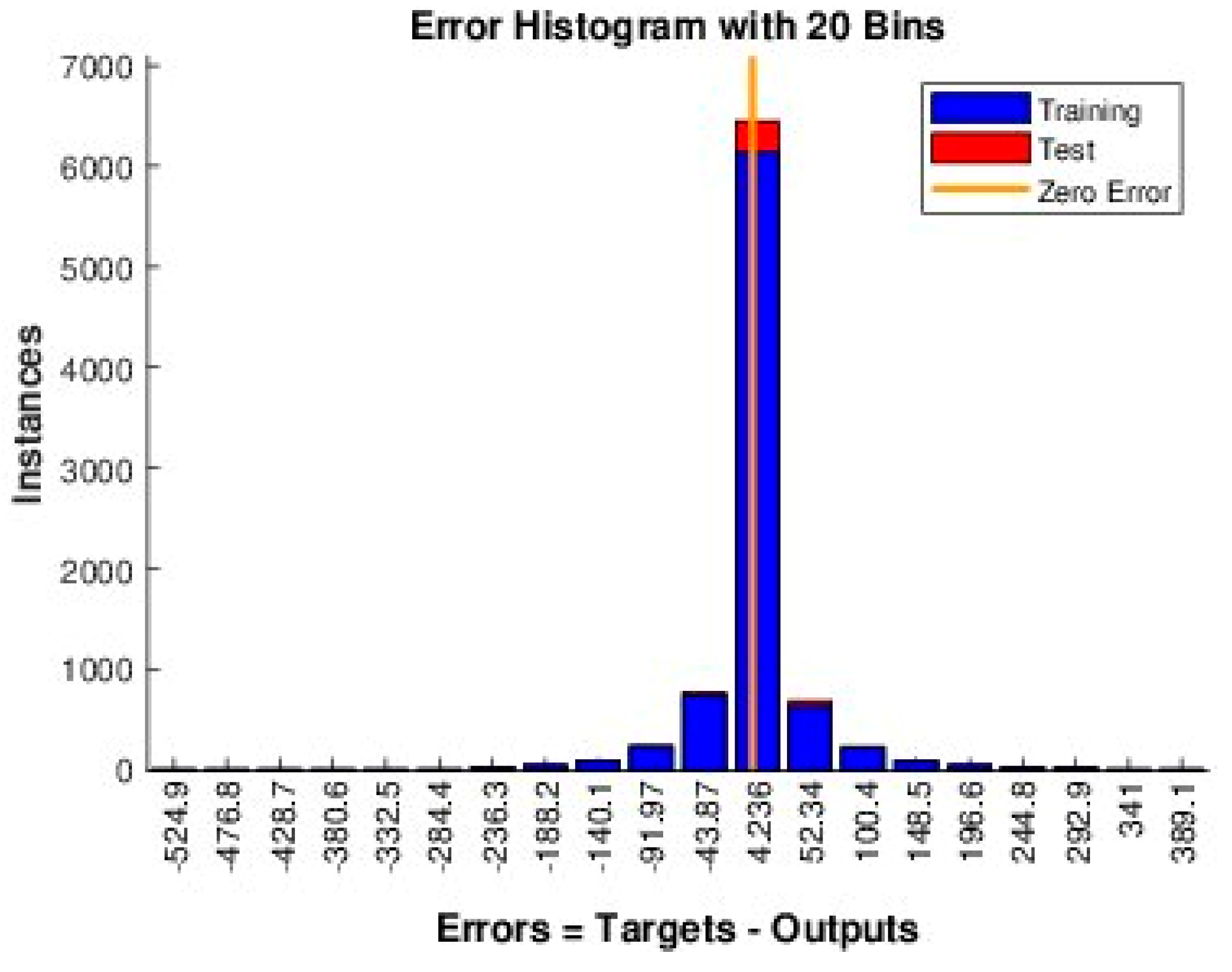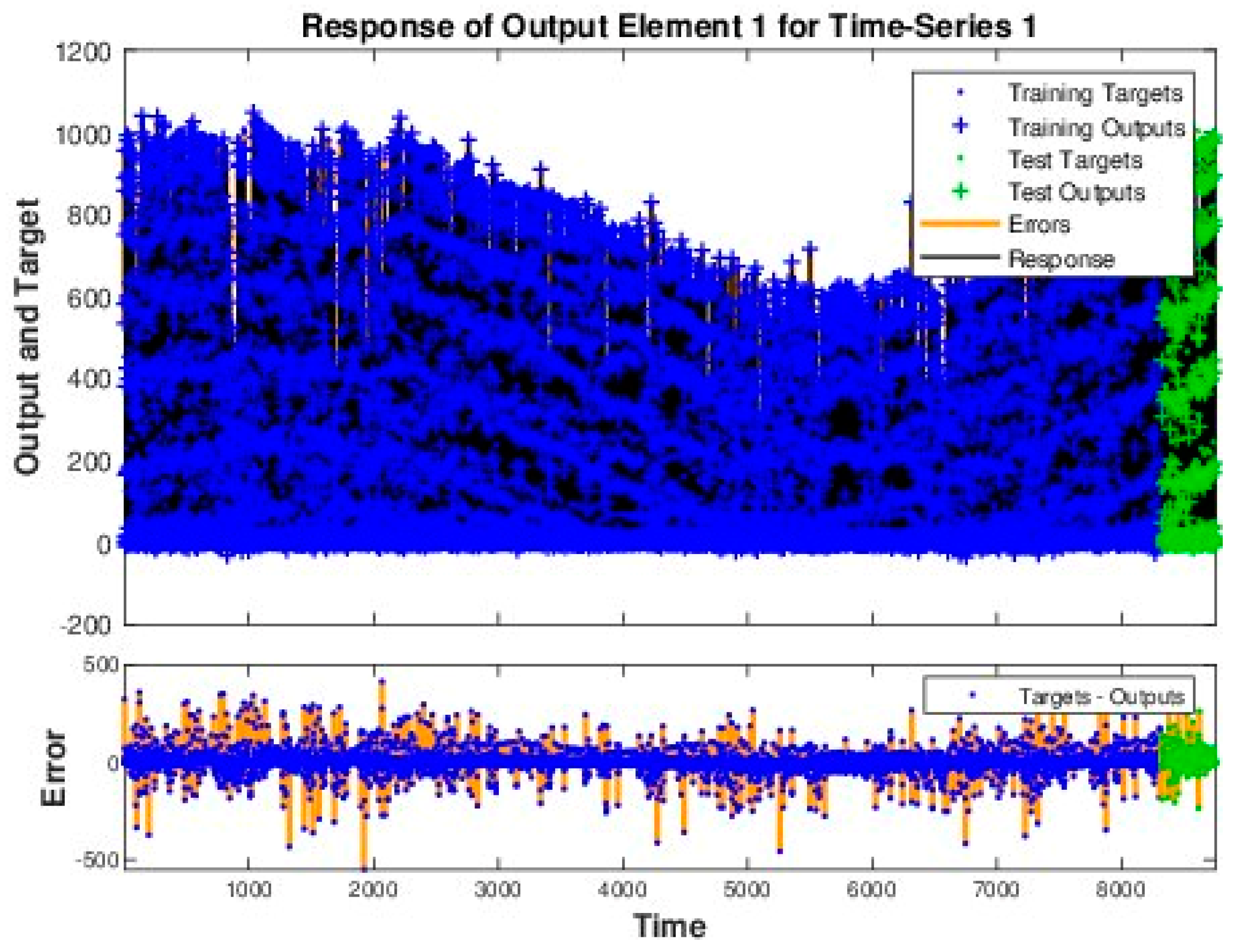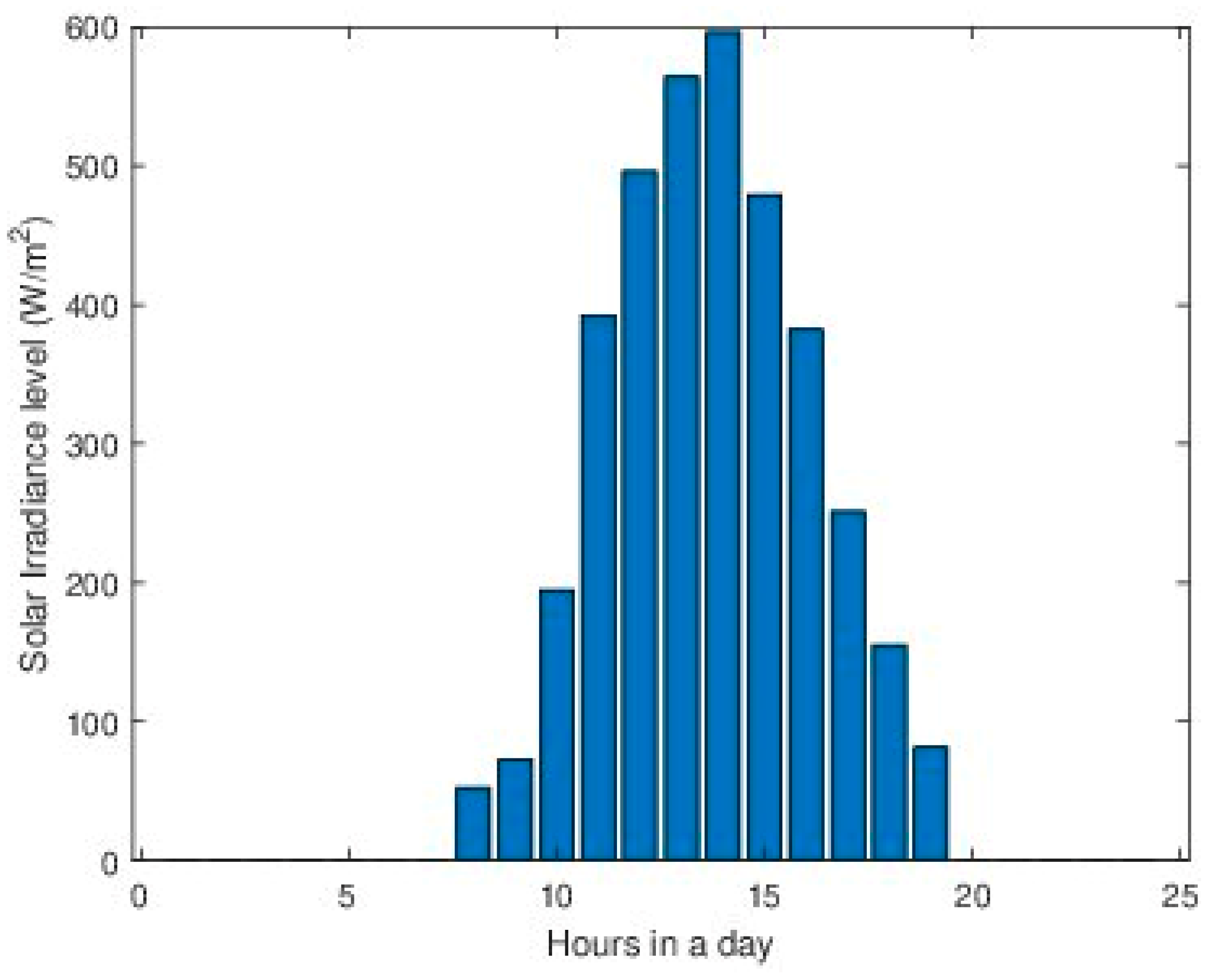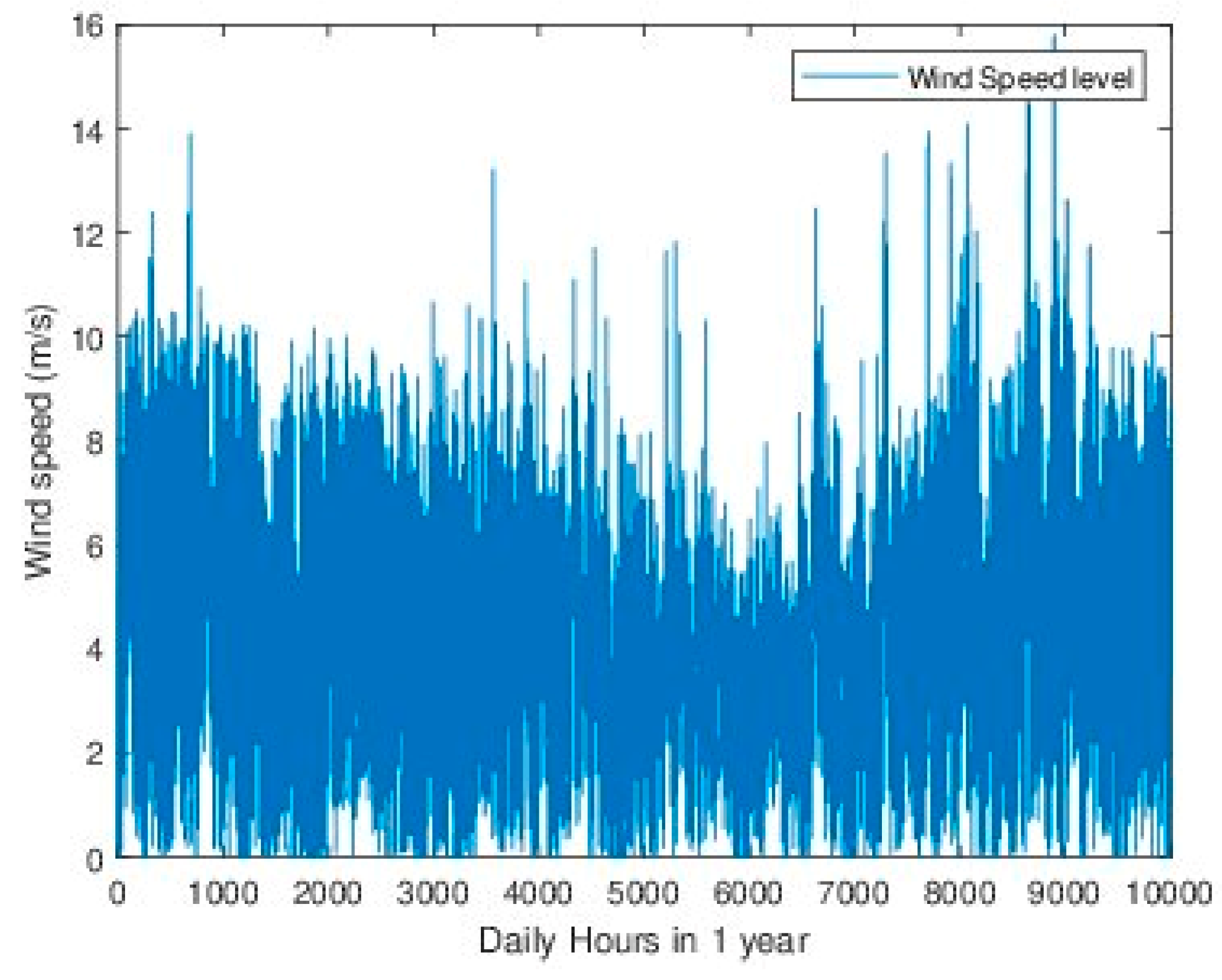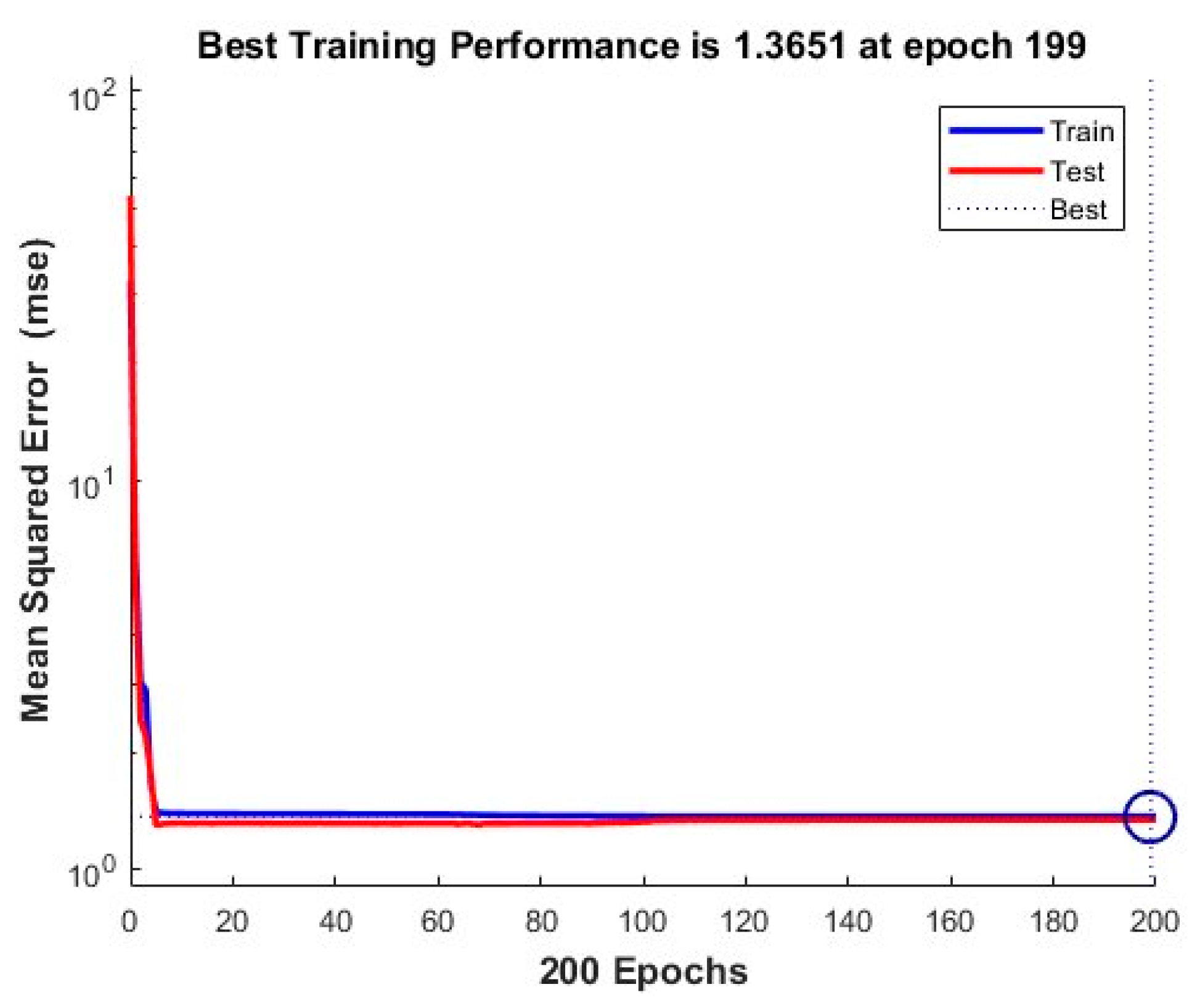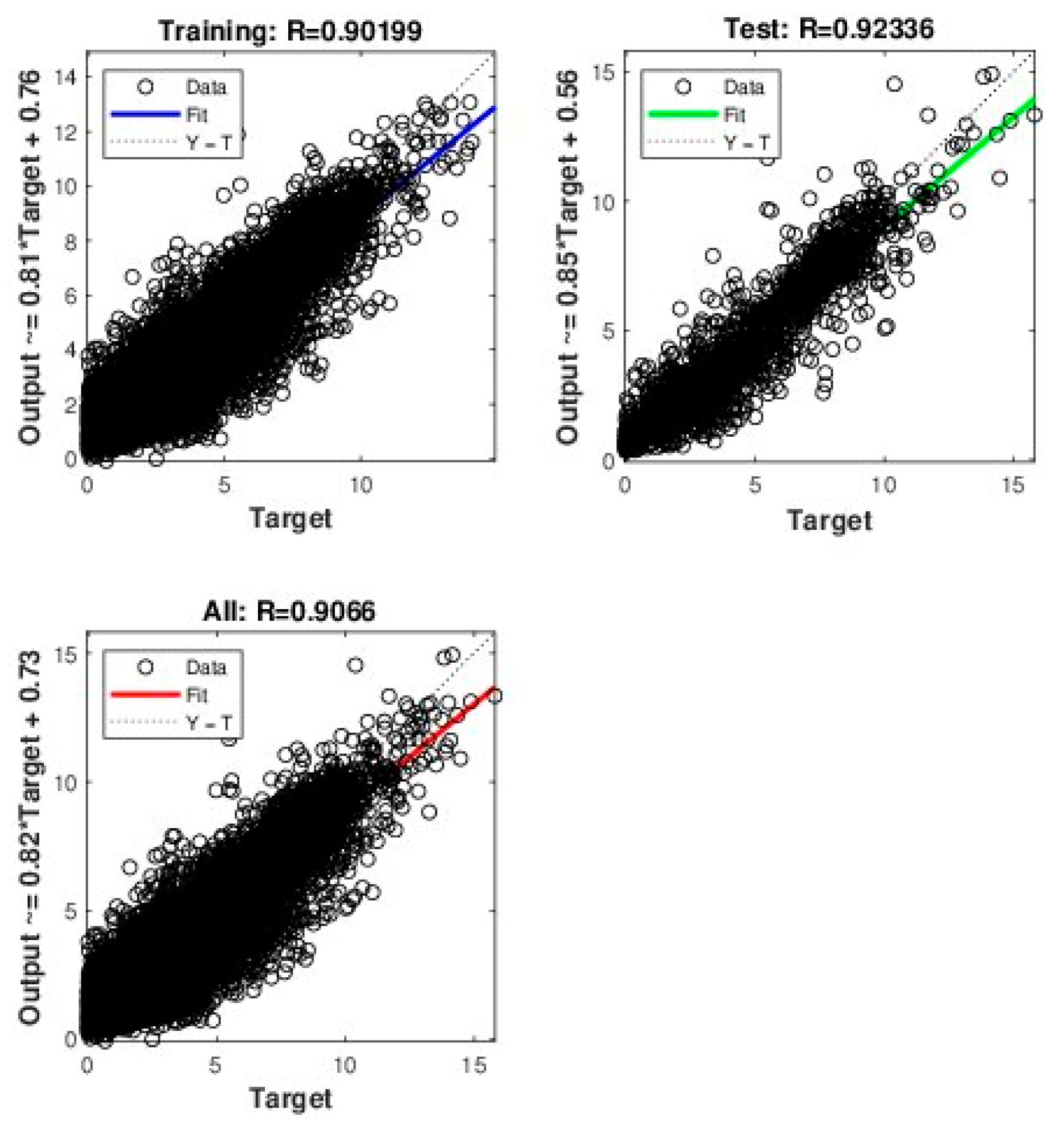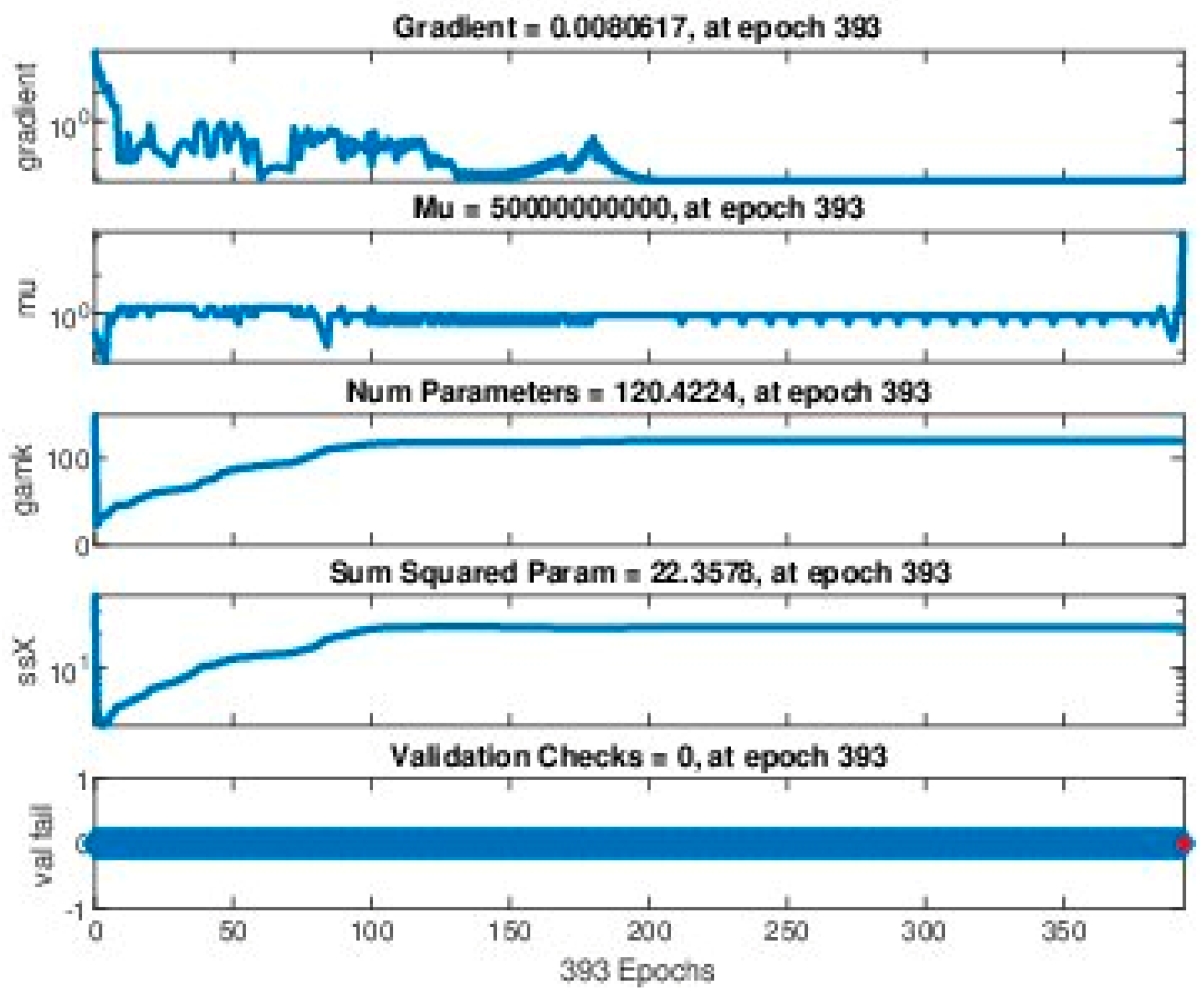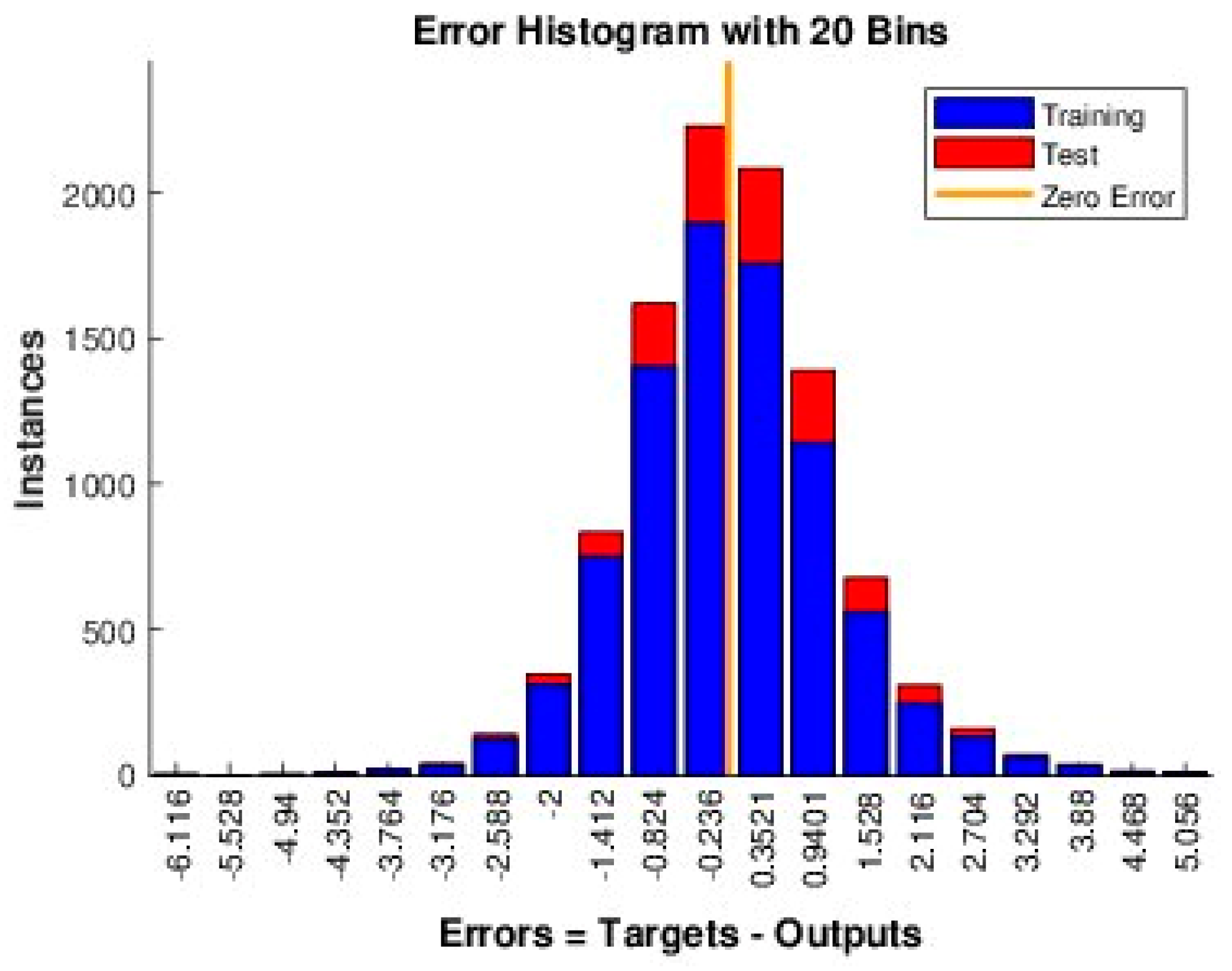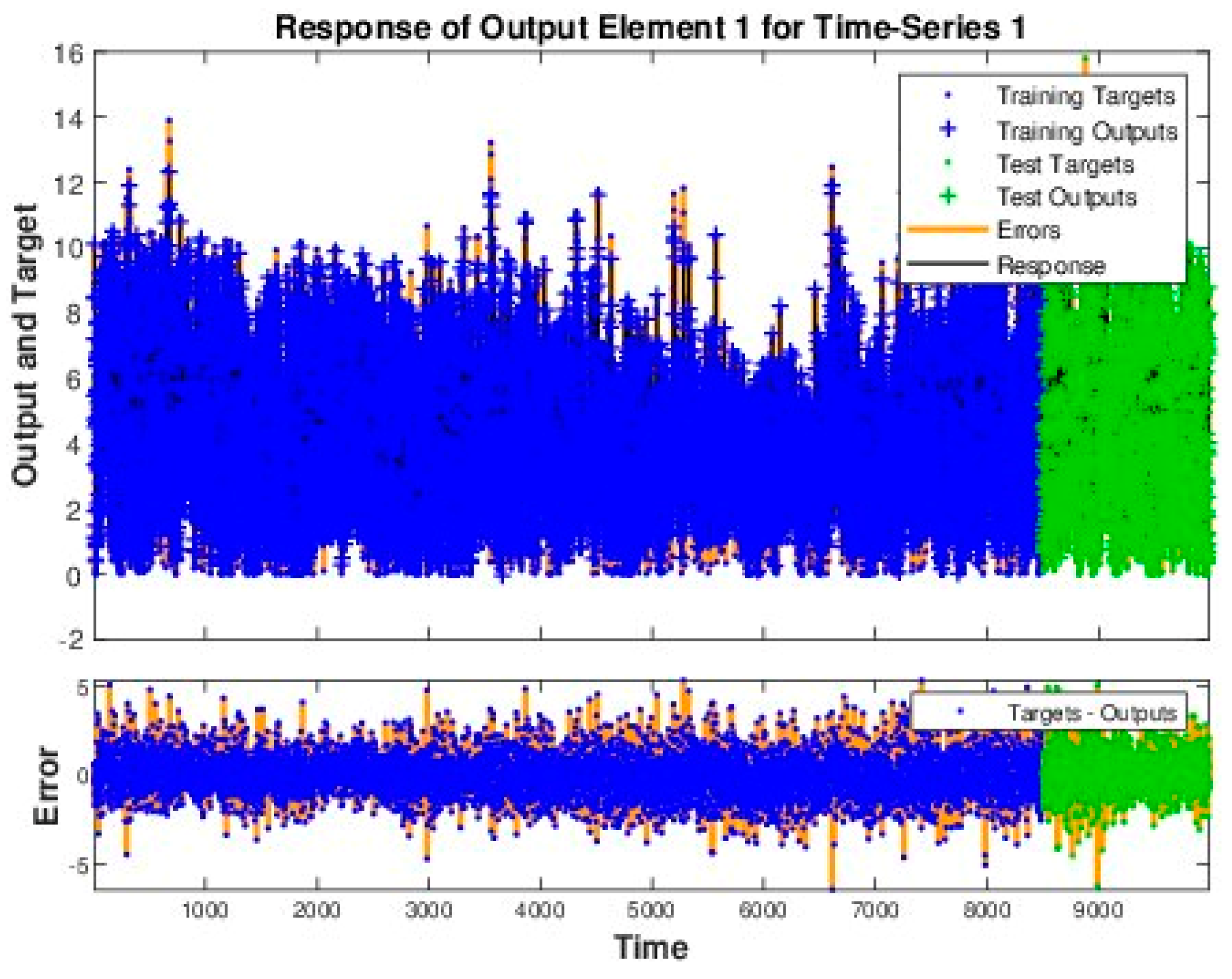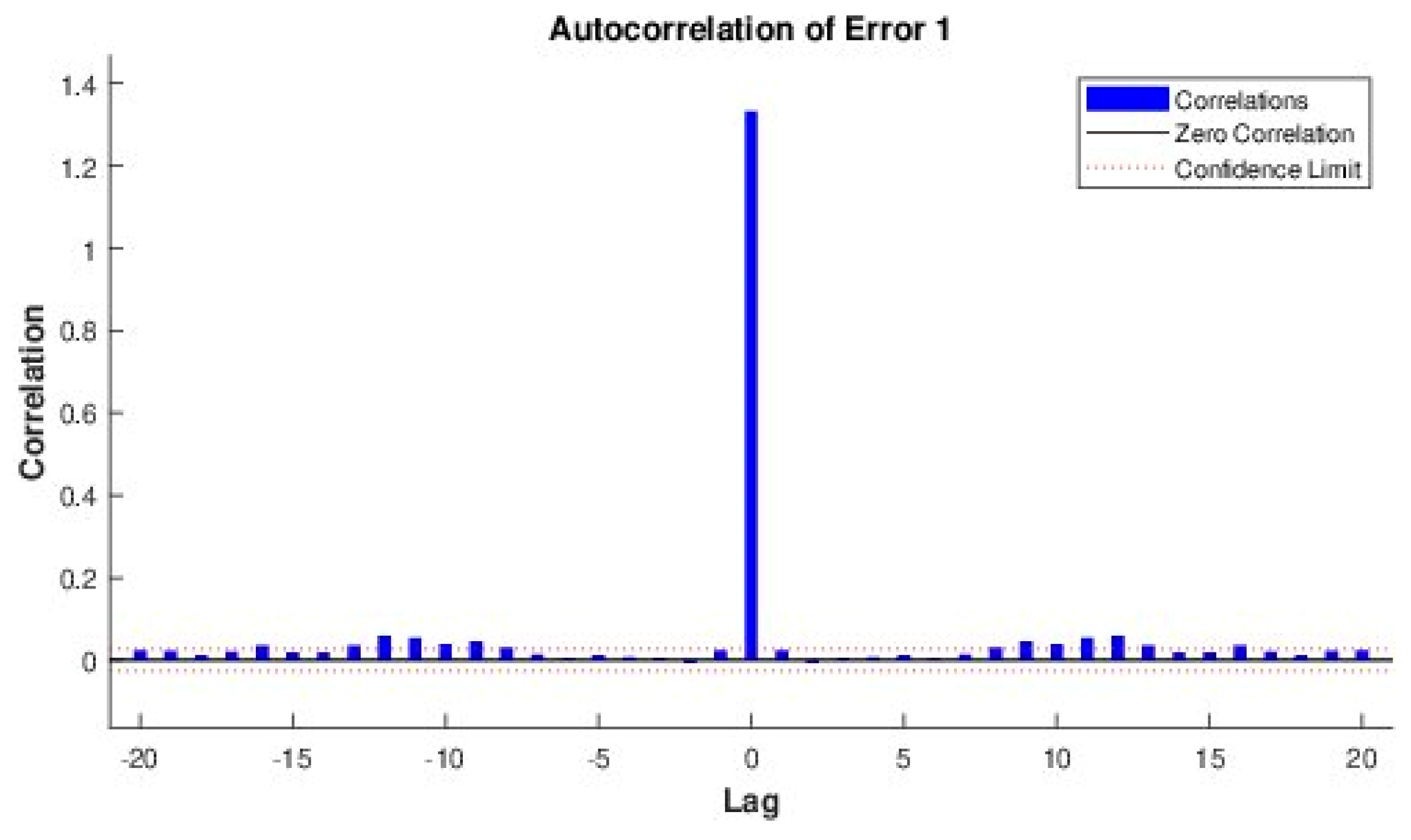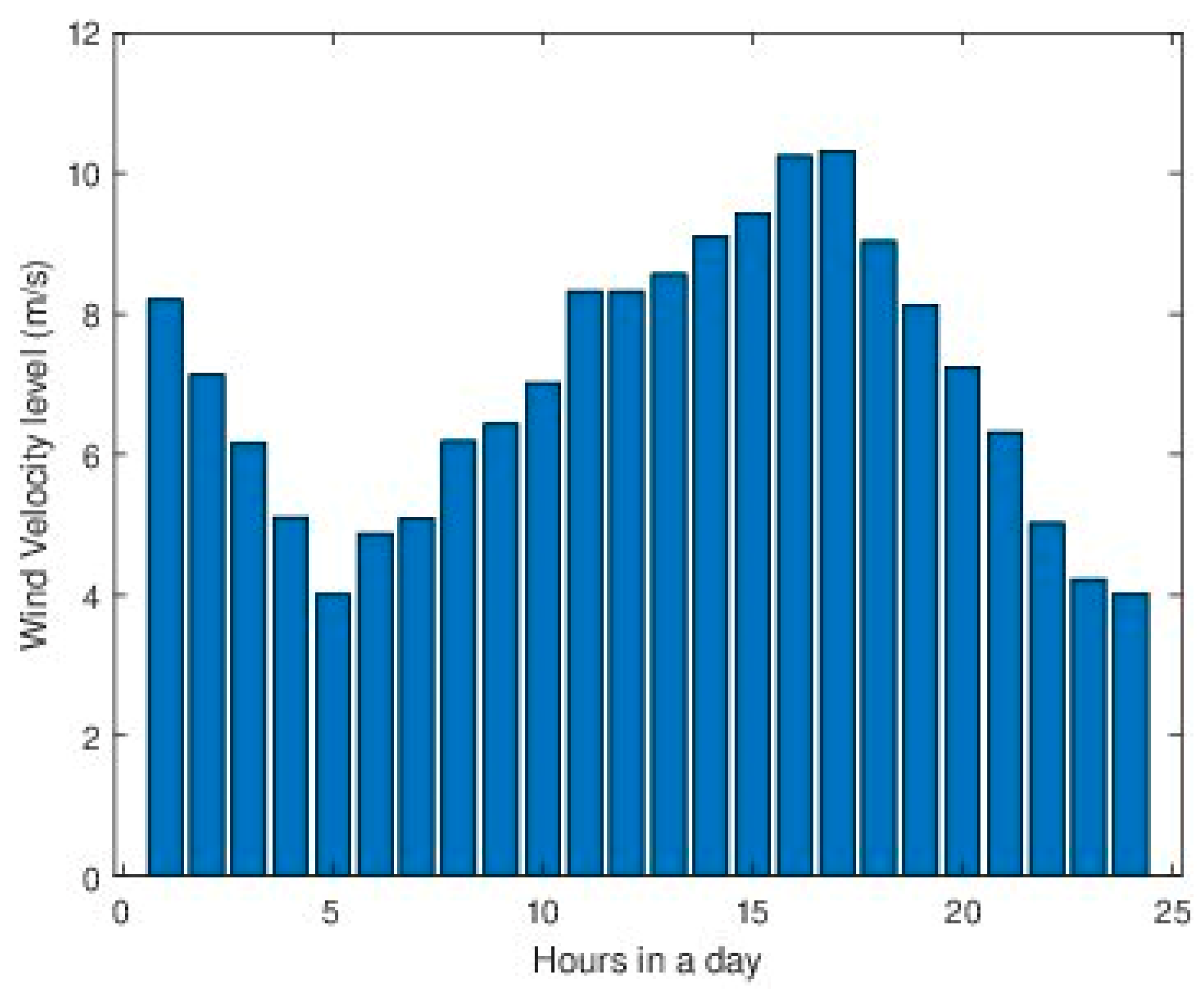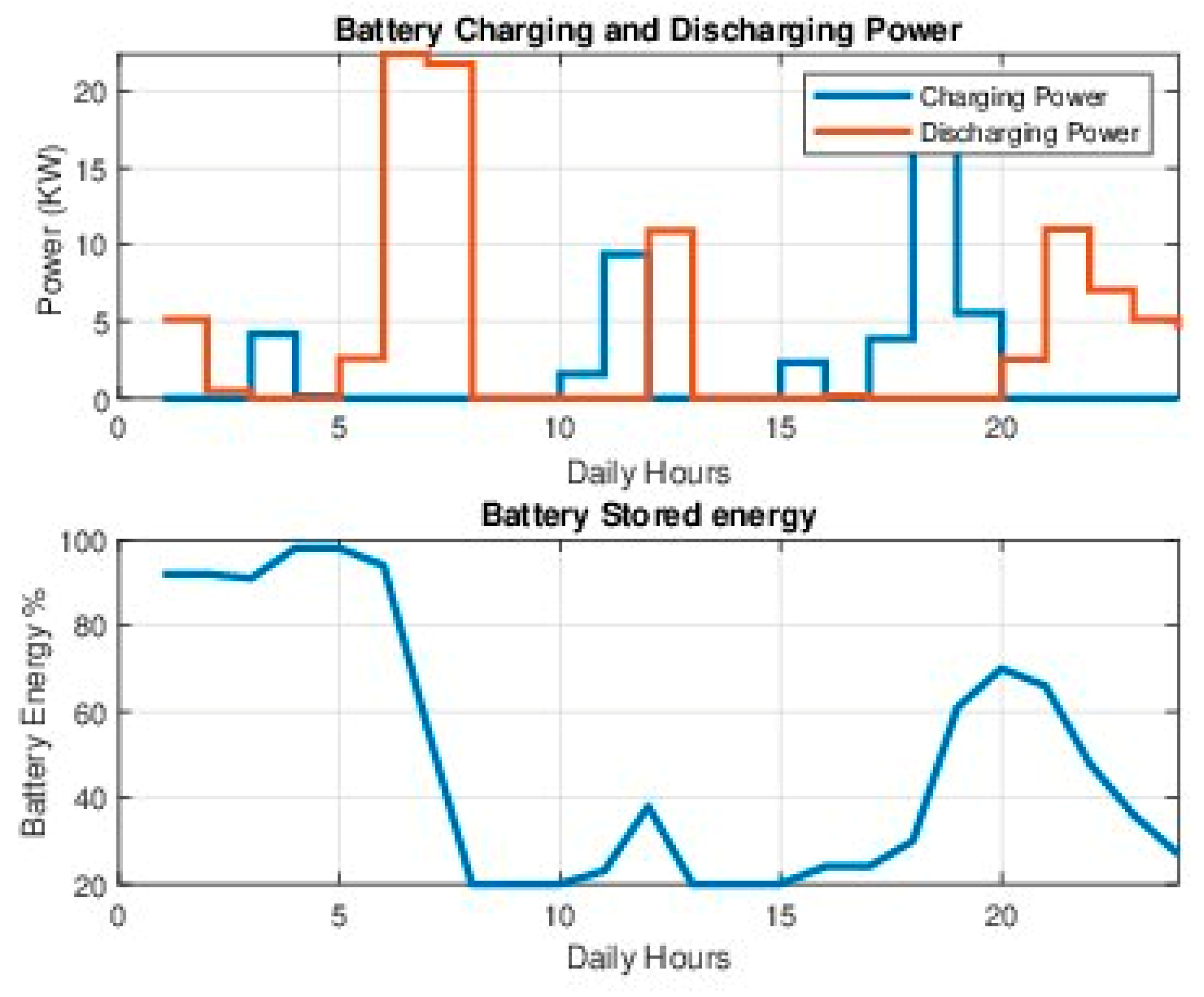7.1. Time Series Forecasting Analysis
A time series plot is the graph of a particular data set over a specific period of time. Time series analysis has been extensively performed in the past for predicting future values [
24]. The process is called time series forecasting analysis. In this analysis, the values for a particular variable are predicted depending on the dataset available from the past. Many forecasting techniques have been used commonly in the past. Each technique has its specialty, advantages, and disadvantages. A large-scale comparison between the traditional logistic regression and neural networks has been exhibited in [
25], vide which a comparison
Table 2 is shown below.
Keeping in view the complexity of the problem, the large dataset, and the good attributes, it is clear that one should choose neural networks rather than traditional logistic regression. Hence, a neural network algorithm has been used in this research.
A neural network-based technique that involves highly intelligent neurons, just like human ones, to predict future values has been implemented here [
26,
27]. To demonstrate the forecasting analysis, suppose there exist a series of data having dependence on time
t given by Equation (8):
Here V(t) is the vector containing the values of variable x at different time instances, and x() represents the magnitude of variable x at time instant i.
Using the previous values of the variable
x from the past as given in the vector
V(
t), the desired value can be predicted by using a particular function f and is given by Equation (9).
Here is the predicted value of the variable x at some time instant which is often called the length of prediction.
The following problem can be easily solved by approximating the function which is closest to the model and thus gives a minimum mean square error. The process involves the following steps:
- (a)
Choose the appropriate algorithm.
- (b)
Train the network for every value of a variable at various time instances .
- (c)
Calculate the mean square error and adjust the weights.
- (d)
In the end, just evaluate the model at the desired time instant .
7.4. Bayesian Regularization-Based Back Propagation Neural Networks
In the implementation of the backpropagation methodology, there must be a suitable and effective function that will propagate the error backward in such a way that the probability of the mean square error increases and accurate results can be obtained. There are many algorithms that have been used in the past, but the most accurate and versatile algorithm is the Bayesian regularization algorithm. Other such types of algorithms may include Levenberg Marquardt (also known as the LM algorithm). However, it has been observed that Bayesian regularization gives the maximum probability of fitting the data set as compared to the LM algorithm, thus reducing the chance of overfitting the system. Further, it is also observed that Bayesian regularization algorithms provide the highest level of correlation coefficients and the least amount of mean square error [
36]. As a result, this algorithm gives the result with the highest level of accuracy and consistency. This is the same reason why this algorithm has been used in this research.
To show the methodology of the algorithm, suppose a neural network system consisting of input layer
, hidden layer
and output layer
. The input to the system is represented by
is associated with the input weight matrix
and a bias term
to yield the output of first layer
which acts as the input to the activation function
. The effective output of the first layer is then given by the activation function
. The bias is added to increase the flexibility of the overall system. The output of the first layer
acts as an input to the hidden layer
, interacts with the Weight matrix
and bias term
to activate the transfer function
for an output of
. Lastly,
is given to the output layer as an input which combines the effect of a weight matrix
and bias term
to give a signal to the activation function
, which then calculates the final output
of the system. In general, a neural network consisting of
no of layers, weight matrix
and bias vector of
for any given layer l can be modeled in the form of Equation (10).
Here
represents the total number of processing cells in the particular layer l. The magnitude of the signal at the input side of the activation function is given by Equations (11) and (12):
and
Here,
shows the total amount of neurons in layer
,
shows the total amount of neurons in layer
and
shows the total amount of neurons in layer
. The number of neurons of the first and last layer is directly associated with the input and output layers. In contrast, the inner layers’ neurons help in adjusting the weights while keeping in view the condition of least mean square error. A back propagation neural network consisting of input, hidden, and output layers is shown in
Figure 8.
The network error is evaluated at the end of each iteration by taking the difference between the calculated value
and exact value
. This error is then backpropagated to update the values of weights associated with various neurons. Very often, the error in a layer is given by the weighted sum of the sensitivity. Here, the term sensitivity of the neural network means the change in the output with the variation in the input values. There are a number of algorithms that are used in the literature to give the relation between the sensitivity and error of any layer l of the neural network. One such relation known as the recurrence relation, is given by Equations (13) and (14).
and
Here
is a matrix that is diagonal and it contains the partial derivatives of the transfer function
with respect to the variable
. The matrix is given by Equation (15):
In some cases, when the transfer function chosen is a linear one, the above matrix will be a unit or identity matrix.
It is important to note here that the reverse propagation of error updates the weights of the hidden layer to obtain the best results at the output. Now, if the data is processed backward too many times, the model will become hard familiar with only the current data set. This may lead to overfitting of the model, which needs to be avoided. It is because the overfitted model may give the least amount of mean square error but with the compromise of loss of sensitivity. Hence, it will perform poorly when a new data set is passed through the model. Therefore, a good model should give the minimum amount of error, and it should work well with new data sets as well.
To compute the mean square error of the model, consider a data set d consisting of input vector
v and output true values
t. The data vectors in terms of input-output order pairs are given by Equation (16).
Now, the output against each input obtained deviates from the true known values, thus generating an error for the first-order pair. Similarly, the error in the ordered pair of the data set is generated for the complete size of the data array. The error thus computed is represented in the form of a performance index which is a term used for the direct measurement of how much the model is accurate and robust. The overall performance index of the neural network model is given by Equations (17) and (18):
and,
Here, is the weight vector of size K containing all the weights.
To make the model robust, the above neural network model can also be expressed in a more general form by adding a penalty factor term in the performance index relation. The new relation after the addition of (
μ/
ν)
as a penalty term is given by Equation (19).
Here,
μ and
ν represent the Bayesian regularization parameters while
represents the whole network mean square error. The
(NMSE) is given by Equation (20)
Now, the main objective in training the neural network is the calculation of the Bayesian regularization parameters, i.e.,
μ and
ν. If
μ < ν, the error calculated will be too smaller that it can be ignored. On the other hand, if
μ >
ν, then the error will be considerable and it cannot be ignored. To find the optimal values of
μ and
ν in a given data set, consider the weight vector
as a random variable with the objective of finding the maximum probability
of the weight which minimizes the mean square error. This probability can be calculated by using the Bayes rule, which states that the expression can be written in terms of probability function
, prior density
and the normalization factor
. The expression is given by Equation (21):
Assuming the error in the data set has the Gaussian distribution, the probability function takes the form of Equation (22):
Likewise, prior density can be written in the same manner by considering the weights as the Gaussian distribution. The prior density
will be calculated by using Equation (23):
With
Hence, the probability
can be written in the form of Equation (24):
With, is the normalization factor.
Now, optimal values of the Bayesian parameters
μ,
ν can be found by solving the probability function and are given by Equation (25):
Here,
μ* and
ν* are the optimal values of the Bayesian Regularization, and
β represents the number of parameters ignored to minimize the mean square error and is given by Equation (26):
Here, the matrix
is a hessian matrix calculated at the weight vector
and is given by Equation (27):
Here, the matrix
J is the Jacobian matrix containing the first derivatives of the error with respect to the weights
. Now the factor
which is known as the normalization factor takes the form of Equation (28):
At the final step of training the network, the updated weights can be calculated by using the LM algorithm which is given by Equation (29).
Here the parameter γ is the LM damping factor which tends to decrease the error gradient to zero at the end of each iteration.
